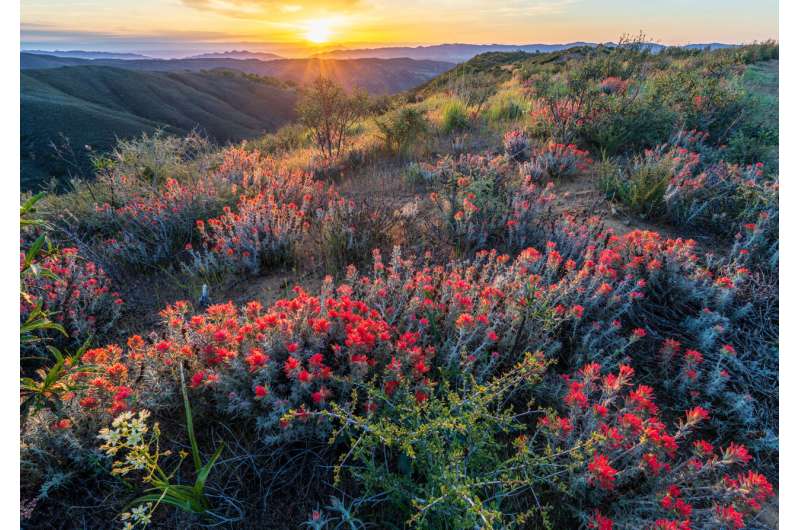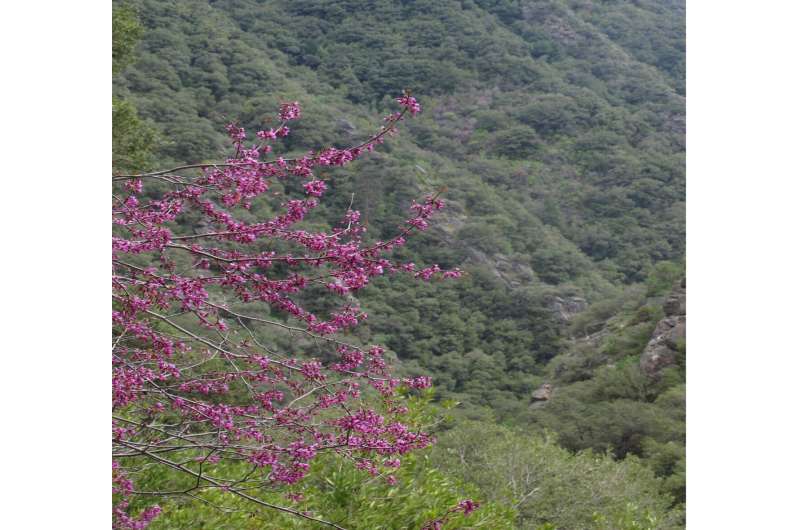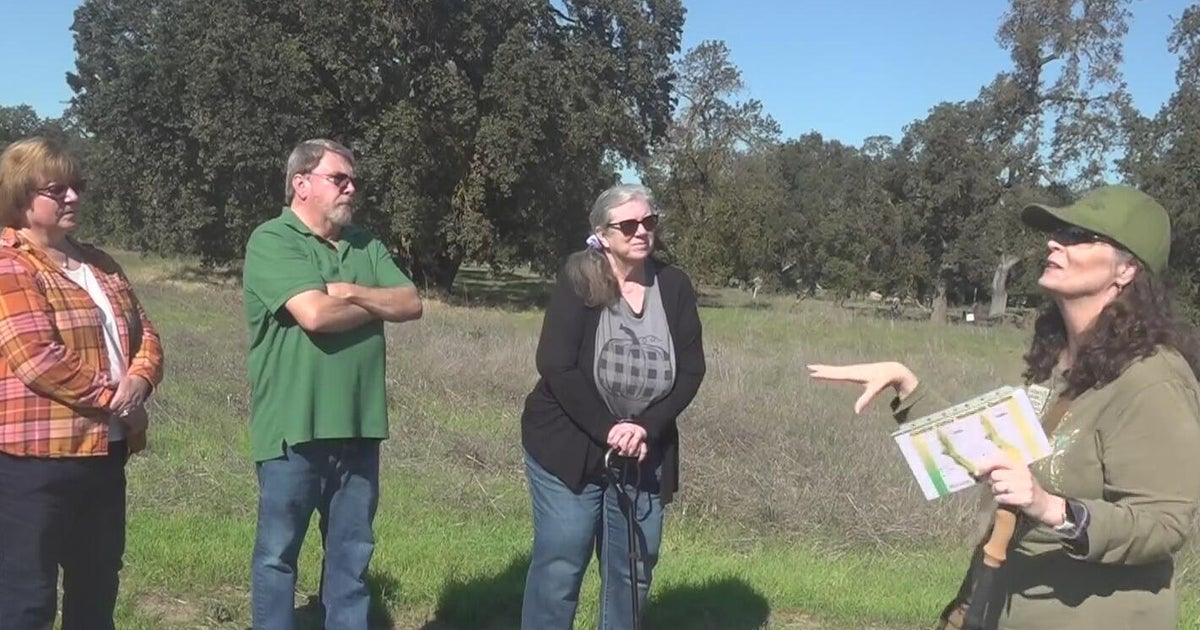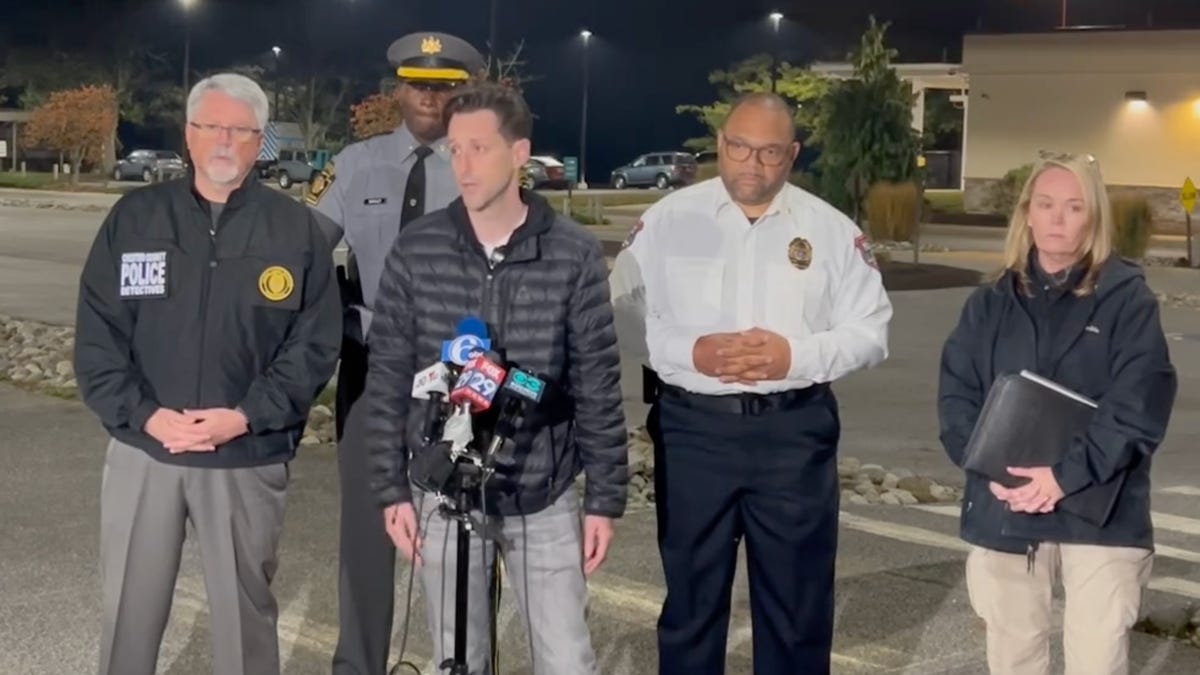California
California a botanical and climate change hot spot

From coastal redwoods and Joshua trees to golden poppies and sagebrush, California is a global botanical hotspot. It’s also a place confronted with extreme heat, wildfires and crumbling coastlines.
The state’s natural beauty and history of pioneering conservation efforts make it a test bed for protecting biodiversity in the face of current and future climate change, argues a study led by the University of California, Davis.
Published July 29 in Proceedings of the National Academy of Sciences, the study, “Climate Change and California’s Terrestrial Biodiversity,” is part of a special PNAS issue on California sustainability.
The study concludes that California’s 30 x 30 Initiative to preserve 30% of its lands and coastal waters by 2030, along with efforts to harmonize biodiversity conservation and renewable energy, is a promising step. It also highlights the need for California to shift away from its decades-long fire suppression policies and adopt fire strategies reflective of new fire regimes.
“California has had a history for over 100 years of being a leader in protecting the environment—from setting aside parks for people to climate adaptation,” said lead author Susan Harrison, a professor in the UC Davis Department of Environmental Science and Policy. “The threats are extreme and unprecedented, but California has always been a state where creative new solutions have emerged.”
California’s climate has become warmer, drier and more variable since the mid-1900s, the study noted. It examined major threats climate change poses to the state’s biodiversity and sustainability. These include the impacts of shifting plant biodiversity, land-use change, wildfire and renewable energy, and the policy responses to those challenges.

Hot spots on the move
The authors modeled the distribution of about 6,400 native plant species, identifying 15 regional plant biodiversity hot spots—from small areas, such as the Channel Islands, to vast parts of the Sierra Nevada and coastal ranges.
The models indicate these hot spots could lose an average of 19% of their native plant species by 2080 under current climate projections. California’s complex mosaic of microclimates means the state’s species could respond in a wide variety of ways to climate change. Some hot spots are expected to move toward the coast or upslope, while others remain or disappear.
Those stakes help outline the need for renewable energy projects to align with expected biodiversity shifts and needs. For example, Molok Luyuk, or Condor Ridge (formerly Walker Ridge), was slated for wind development projects along its blustery ridge despite its rich biodiversity, before earning protection as part of Berryessa Snow Mountain National Monument.
“This paper is pointing out that we need to be proactive,” said co-author James H. Thorne, a research scientist with the UC Davis Environmental Science and Policy department. “We can’t be reactive like, ‘Oh, this wildfire is out of control. Oh, this species is disappearing. Oh, we misplaced where this green energy site should go.’ We have tools that can be used, some of which we discuss in this paper.”

A new mindset
Wildfire is a nearly year-round reminder of the state’s hotter, drier climate.
The authors write that fire management policies in California are less progressive than its policies for climate and conservation. The paper encourages the state to move away from its longstanding policy of fire suppression and adapt its strategies to use fire as an ecosystem management tool.
State and federal agencies have set ambitious targets to increase the use of fire in land management but have been stymied by bans on prescribed fire motivated by safety and air quality concerns.
Harrison calls wildfire and climate change “game-changers” for how we think about conservation.
“Traditionally, ‘conservation’ had a restrictive meaning—we try to keep things the same. If anything goes missing, we try to put it back,” Harrison said. “But now, we require a different mindset. We need to be willing to modify traditional views of conservation. We need continual innovation.”
More information:
Harrison, Susan, Climate change and California’s terrestrial biodiversity, Proceedings of the National Academy of Sciences (2024). DOI: 10.1073/pnas.2310074121. doi.org/10.1073/pnas.2310074121
Citation:
California a botanical and climate change hot spot (2024, July 29)
retrieved 29 July 2024
from https://phys.org/news/2024-07-california-botanical-climate-hot.html
This document is subject to copyright. Apart from any fair dealing for the purpose of private study or research, no
part may be reproduced without the written permission. The content is provided for information purposes only.

California
Nature tour highlights historic importance of California oak trees during the fall

The Shumway Oak Grove Regional Park in Stockton launched an autumn nature walk for the community to get an inside look at how important California’s historic oak trees are, especially during the fall.
Carolyn Dougherty is a volunteer naturalist at Oak Grove Nature Center and led a group of people on Sunday morning for a new nature walk, which kicked off this fall: “Autumn Among the Oaks”.
“During the autumn, we talk about what’s happening here in the autumn, like our oak galls and our acorns,” Dougherty said. “And what animals are doing and what our Yokuts tribes were doing at this time of year, which was gathering acorns to store for the winter.”
Dougherty is a retired educator and a big advocate for lifelong learning, not just for herself but to share knowledge with others — especially at this Oak Grove preserve.
“We are a preserve,” Dougherty said. “And I’d like people to understand why the importance of preserving the oak groves isn’t just because of the trees but all of the species that each tree supports.”
Dougherty said these oaks are keystone species, supporting up to 4,000 different species like California scrub-jays, acorn woodpeckers, California ground squirrels, and Western lizards.
“This is my second time taking this tour because I find it fascinating,” Dr. Julie Bates-Livesay, a Stockton resident, said. “And so I got to learn more about galls that grow on oak trees that we make ink out of them, that historic documents were written in the ink produced by them.”
Dougherty said the Yokuts Trail and Miwok Trail were named to pay homage to the ancestors of the area. And as these leaves fall this season, one of the goals of the tour is to have an appreciation for California’s rich history.
“To know where we came from and just to have a deeper appreciation of native California history…the importance of our landscape and what our native landscape contributed to our indigenous people, and how it transformed with our agriculture and industry,” Dougherty said.
Dougherty says 80% of these groves in California are unprotected and can be affected by development and agriculture.
“So, each time that we can protect a little pocket of it is important to us,” Dougherty said.
“Come out and be in nature,” Dr. Bates-Livesay said. “We’re very fortunate to live where we live, to have access to this kind of a nature environment. Whether it be here, at Oak Park, or in Lodi, at Lodi Lake, or a little further up the hill at one of our California or National Parks. We’re blessed here in California to have that kind of access.”
With each step the local community members took with the tour, they learned to appreciate the oaks, their history, and the steps it takes to preserve the land amidst this season.
“To see the park being utilized, from everything from frisbee golf to these kinds of educational tours is a big thing,” Dr. Bates-Livesay said.
“I think it’s really important to understand where we came from, and that our part in this life is to be a good steward,” Dr. Bates-Livesay said. “And the only way you can be a good steward is if you even know that nature exists and that you’re a part of that.”
There will also be a Sandhill Crane Festival in Lodi next week. Dougherty told us these habitats were once threatened, but with the help of conservationists and local farmers working together, she says the cranes are coming back.
There are tours for different seasons with different topics related to the season, along with a nature center with different programs. Some of those include walks, school tours, an “Astronomy in the Park” monthly event to see stars, and hands-on learning for people of all ages.
For Dr. Bates-Livesay and her friends, they capped off the tour with a picnic among the oaks.
California
It rained a lot in October. Is fire season over now?

This autumn brought something that isn’t always common for much of California — a decent amount of rain in October. Rather than heat waves, there have been umbrellas.
After years in which some of the worst wildfires in state history happened in the fall, a lot of people are wondering: Is fire season over?
It depends on where you live, fire experts say. And simply put, there’s more risk in Southern California right now than Northern California.
“We have not yet seen enough rain in Southern California to end fire season,” said Daniel Swain, a climate scientist with the University of California division of Agriculture and Natural Resources. “But we probably have in Northern California.”
January saw historic, devastating fires in Los Angeles. Since then, it has been a relatively mild fire year statewide in California.
Through Monday Oct. 27, a total of 522,372 acres have burned statewide in areas overseen by the California Department of Forestry and Fire Protection and the U.S. Forest Service. That’s a drop of 40% from the previous 5-year average of 1.3 million acres over the same time. A big part of the reason is the early onset of rain.
Through Thursday, San Jose had received 2 inches of rain, more than four times its historical average for the month of October. Oakland had 1.64 inches — double its historical average of 0.84. Sacramento’s total also was double the historical average, and Santa Rosa and San Francisco were at 125% and 113% of normal for the month.
Farther south, Fresno was at 223% of normal, with 1.18 inches, and Los Angeles had received 252% of normal with 1.41 inches. But a few areas, including San Diego and Palm Springs, remain below normal. And nearly all of Southern California’s rain came in one storm on Oct. 15. After that, temperatures have soared back up, hitting 97 in Los Angeles this week.
On Wednesday the National Weather Service issued a red flag warning for parts of Ventura and Los Angeles counties. With forecasts for strong winds that day, Gov. Gavin Newsom announced that 129 firefighters, 10 engines and three helicopters would be pre-positioned in case fires started in those areas.
But in Northern California, the trend has been just the opposite.
Cal Fire cancelled a controlled burn planned for Wednesday at the Soquel Demonstration Forest in Santa Cruz County aimed at reducing overgrown brush. The reason: brush and trees were too damp.
The day before, Cal Fire officials had planned to burn 52 acres in San Mateo County in a controlled fire east of Interstate 280 near Belmont and Crystal Springs Reservoir. They gave up after 6 acres because only grass and not heavier vegetation like coyote brush would burn, said Sarah Collamer, a Cal Fire forester who was overseeing the operations.
“We’re still in fire season,” she said. “We are getting small starts. They are going until we put them out. But the fire danger is greatly reduced.”

Illustrating her point, last Thursday, a fire broke out east of downtown San Jose at Alum Rock Park. Cal Fire sent a plane to drop retardant on it. But it was put out at 10 acres and caused no damage. A grass fire that began near Altamont Pass in Alameda County last Sunday burned 20 acres and was easily contained by fire crews.
Moisture levels are key. As most campers know, wet wood doesn’t burn. When California is in droughts and heat waves, moisture levels in plants plummet. After rains and cooler temperatures, along with higher humidity levels, moisture levels go up. Then, fires may start in grass, but they don’t spread easily to damp brush and trees, particularly if there aren’t strong winds.
“Right now you could get a grass fire going,” said Craig Clements, director of the Fire Weather Research Laboratory at San Jose State University. “But whether or not it will end up being a big fire is unlikely. We are seeing the hills green up already from the early rain. It looks like January right now in the East Bay Hills.”
Overall, national experts say California is in good shape. The 7-day forecast from the National Interagency Fire Center in Boise, Idaho has “little or no fire risk” for all of California except part of southern California from Santa Barbara to the Mexican border where it is listed as “low risk.” And more rain is forecast in Northern California on Wednesday.
Fire experts disagree on whether there is an exact amount of rain each fall that signals the end of fire season. Often, supervisors of controlled burns wait until at least 1 inch has fallen, Clements said.
Dan Cayan, a research meteorologist with the Scripps Institution of Oceanography in San Diego, published a study in 2022 showing that since World War II, 90% of the acres burned in Southern California have burned before 0.35 of an inch of rain has fallen in autumn. After that, fires can still start during winter dry spells and high Santa Ana winds, he said. But they are much less likely.
“Northern California is doing pretty well,” he said. The dividing line this fall between wetter-than-normal and drier-than-normal runs through L.A. County. We’ve had some slight rain in San Diego, but it has been nearly three weeks with nothing. We’re still in a vulnerable situation down here.”
Many of California’s worst wildfires have occurred in the fall, including the Oakland Hills Fire in October 1991; the Camp Fire in Paradise, in November 2018; and the Tubbs Fire in October 2017, which killed 22 people and burned 5,600 structures in Napa and Sonoma counties.
After those fires, Cal Fire officials and many political leaders began saying that fire season is all year long in California due to warmer conditions from climate change.
To some extent that is true. The devastating wildfires in Pacific Palisades and Altadena this year occurred in January, amid a long, hot, dry spell and winds that reached 100 mph.
But in general, risk goes down when rains start, temperatures cool, and days shorten, experts say. Because of the damp weather this fall, Cal Fire officials have begun to relax back-yard burning rules. Starting Oct. 17, they have allowed it in nearly every Bay Area County and all counties north to the Oregon border, under permits, when it was altogether illegal during the hot summer months.
In winter, Cal Fire stations also reduce staffing from peak levels, although that has not started yet.
“We could still have 80-degree days with winds,” said Capt. Robert Foxworthy, a Cal Fire statewide spokesman. “There’s still a chance of wildfire. We’re not expecting large damaging, destructive fires burning timber and brush because of how much moisture we’ve received. But in some places there is a threat still there.”
California
Exclusive: FBI searched California real estate firm linked to bad bank loans

Item 1 of 2 The podium for the director of the Federal Bureau of Investigation is seen at FBI headquarters in Washington, U.S. June 14, 2018. REUTERS/Yuri Gripas/File Photo
Sign up here.
On September 11, FBI agents searched Continuum’s Newport Beach, California, offices, law firm Paul Hastings wrote in a September 12 letter seen by Reuters.
Representatives for Continuum did not respond to emails and calls seeking comment. The FBI is an enforcement arm of the Justice Department. Spokespeople for the agencies did not respond to requests for comment. An attorney for Cantor Group said the firm upheld the terms of the Zions and Western Alliance loans and did not provide comment on the government scrutiny.
Allen Matkins, a law firm that represents other entities linked to Continuum, wrote in an October 2 letter that it learned on September 11 that certain of its clients were the subject of search warrants “in connection with a pending criminal investigation,” and that a grand jury had been convened in the case.
Prosecutors typically convene a grand jury when they intend to gather more evidence. The letters did not say which specific criminal authority was leading the case or what potential misconduct or individuals it was focused on.
Criminal investigations do not necessarily mean any wrongdoing has occurred and many do not result in charges.
Reuters is reporting the FBI search and probe for the first time. The government scrutiny could have ripple effects for what legal filings and public records show is a complex web of investors and lenders tied to Continuum’s real estate dealings, some of which are entangled in civil litigation.
Paul Hastings and Allen Matkins are representing parties embroiled in a complex real estate dispute. The letters relate to those proceedings. The Allen Matkins letter was disclosed in a California court.
When asked about the letter by Reuters, a lawyer for Paul Hastings said the firm was “working to unravel multiple levels of alleged fraud,” but did not provide more details.
Allen Matkins did not respond to calls and emails seeking comment.
PASSIVE INVESTORS
Zions on October 15 sued Cantor Group fund guarantors Andrew Stupin and Gerald Marcil, among others, to recover more than $60 million in soured commercial and industrial loans. The next day, Western Alliance flagged that it had sued the pair and a different Cantor fund in August to recover nearly $100 million.
Both suits allege key information was misrepresented or not disclosed, breaching the loan terms. Western Alliance also alleges fraud on the part of the Cantor fund.
Continuum acquires and manages distressed real estate assets for groups of investors, and its largest investors include Stupin and Marcil, according to a February arbitration ruling related to the real estate dispute. That ruling found Cantor “consists solely” of Continuum’s legal owner, Deba Shyam, and shares the Continuum offices. Shyam did not respond to calls and emails seeking comment.
Cantor upheld its contractual obligations and was transparent with its lenders, while the loans were audited and independently reviewed multiple times over the years, said the Cantor attorney Brandon Tran, who also represents Stupin and Marcil.
The pair are passive investors in Cantor and held no operational roles, he added. Cantor in legal filings has disputed that the Western Alliance loan is in default.
In a statement, Marcil said he had invested in several of Continuum’s properties. He denied wrongdoing and said that he was a victim.
Spokespeople for Zions and Western Alliance did not respond to requests for comment.
Reporting by Douglas Gillison and Chris Prentice; Editing by Michelle Price
Our Standards: The Thomson Reuters Trust Principles.
-

 Milwaukee, WI5 days ago
Milwaukee, WI5 days agoLongtime anchor Shannon Sims is leaving Milwaukee’s WTMJ-TV (Channel 4)
-

 News6 days ago
News6 days agoWith food stamps set to dry up Nov. 1, SNAP recipients say they fear what’s next
-

 Alabama1 week ago
Alabama1 week agoHow did former Alabama basketball star Mark Sears do in NBA debut with Milwaukee Bucks?
-

 News1 week ago
News1 week ago1 dead, 6 injured in shooting at Lincoln University homecoming festivities
-

 Austin, TX1 week ago
Austin, TX1 week agoDia De Los Muertos Austin: Parades, Altars & Events
-

 Politics1 week ago
Politics1 week agoTrump to jet off to Asia as North Korea fires ballistic missiles and China trade questions loom
-

 Seattle, WA5 days ago
Seattle, WA5 days agoFOX 13’s Aaron Levine wins back-to-back Jeopardy! episodes
-

 Culture4 days ago
Culture4 days agoVideo: Dissecting Three Stephen King Adaptations



















